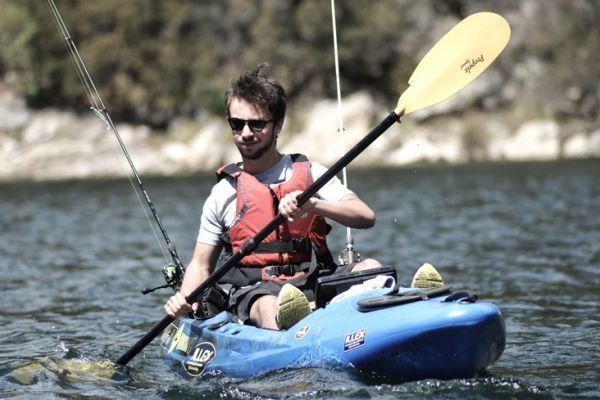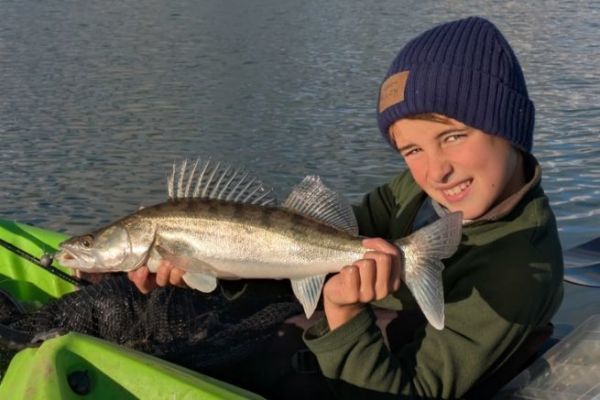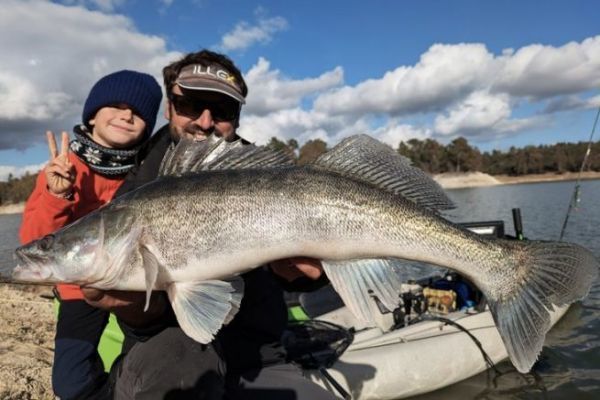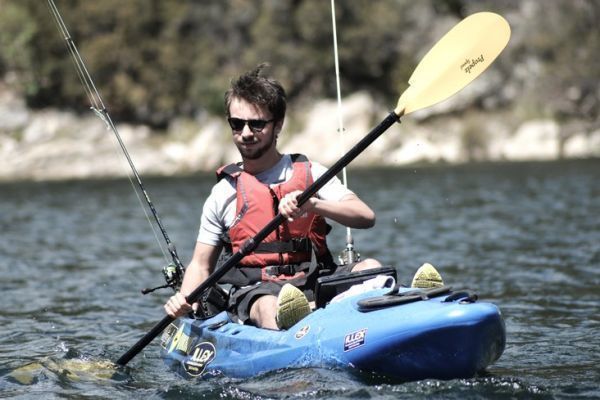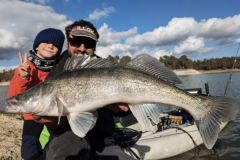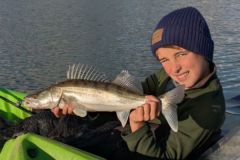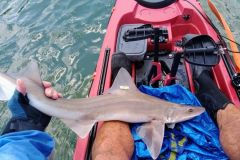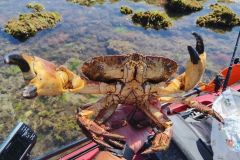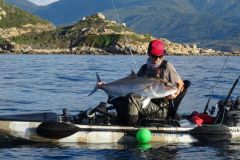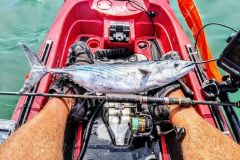Means of propulsion
What sets kayaks apart from other watercraft is the variety of means of propulsion they offer. There's something for every taste and budget. Here are the 4 main ones:
The most traditional are the paddles. They allow you to move forward by pushing the water backwards and forwards alternately to the right and left of the kayak. Of course, they can also be used to back up and turn, even on the spot. The paddle allows you to position your kayak precisely, especially for vertical fishing. Their simplicity also makes them very reliable: no subtle mechanics to "derail".
It's a simple, inexpensive and versatile means of propulsion. There's nothing under the hull to hit the bottom or any obstacles. It can be fitted to all kayaks, especially lightweight kayaks with low inertia, whose stability is ensured by the careful design of the hull. Today's paddles are easy to handle and lightweight (carbon fiber handles), often floating for added safety. Some models are adjustable to suit the angler's morphology. The disadvantage of the paddle is that you can't have both a rod in your hands and the paddle to make progress on the water...
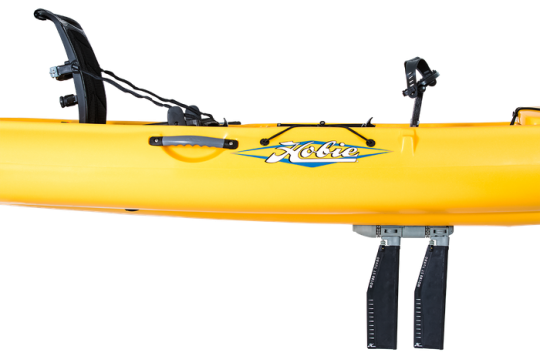
Fitted on Hobie kayaks, Mirage Drive pedal and scull kayaks enable you to travel long distances on the sea or large lakes using your legs. The efficiency is considerable, and you can fish hands-free with very little effort. Two pedals are used to operate two fins, inspired by penguin fins. These fins rotate alternately 180° on an axis and slightly on themselves, pushing the water backwards. The pedals do not rotate like a bicycle, but are operated by alternately pushing on the right and left legs. The new system now allows you to go backwards, which is a real plus for freshwater and for precise positioning of the kayak. The kayak is steered using a rudder. This is surely the most advanced means of propulsion available today.
In addition to shortening distances and reducing effort, this system allows you to fish with your hands free, or to sail up powerful currents on large rivers, for example. When drifting, these buckets also act as keels to stabilize the kayak. This type of propulsion allows you to pass through little water by folding the buckets horizontally under the hull, with a single pedal movement.
Some kayak brands (Jackson, Native...) now offer propulsion by pedal and propeller. Although performance is lower than with sculls, it's still worthwhile. The pedals are driven by leg power and rotate on an axle, like a bicycle. Again, it allows hands-free fishing and easy reversing. This technology is less expensive than sculling. On the other hand, this system is slightly more fragile, and the propeller is exposed to obstacles and the bottom. In shallow water, you often have to remove the propeller from its housing to pass through without risking "touching" it.
For very long distances, for those who want to make the least physical effort, there are now bases for attaching an electric motor to the kayak. The kayak's low inertia (mass) and seaworthiness mean that its battery and travel range are very long. You can reach speeds of up to 15 km/h, and fish all day on a single battery!
Equipment
Fishing kayaks come with a wide range of equipment, all ergonomically adapted to the practice of our passion. A wide range of equipment and fittings are offered as standard, and there are an increasing number of ingenious options to enhance comfort and fishing performance. Brands such as Railblaza specialize in kayak fittings.
Almost all fishing kayaks have storage compartments, waterproof or spray-proof, for lure boxes, small fishing equipment, cameras, clothing, food... These kayaks also come standard with rod holders for carrying several combos on outings. Seats are also standard, as is propulsion, so you can get started quickly and on a budget.
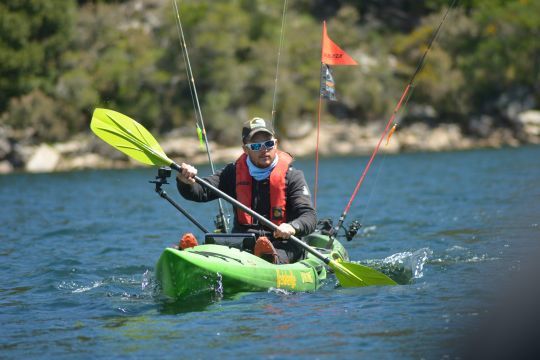
Other accessories are available as options or on certain models only, such as probe and echo sounder housings. Of particular note is Viking's remarkable tackle pod system (PropulseKayak distribution): a receptacle that holds the sounder, battery and transducer between the angler's legs for maximum precision and minimum bulk. The transducer is protected in a cavity designed into the hull to prevent shocks. This removable box can be removed simply by removing a pin to quickly stow away expensive, space-saving and, unfortunately, easy-to-steal fishfinder equipment.
For navigation, many models can be fitted with a rudder, which not only prevents the boat from veering off course on the water, but also allows you to "set" sound, precise drifts. Pedal-powered models feature a hand-operated rudder as standard. Paddle kayaks can be fitted with a foot-operated rudder (often optional).
Particularly relevant to kayak fishing, the floating anchor is virtually indispensable for outings in windy conditions. Kayaks are light and offer little resistance in the water, so they drift very quickly in the wind.
For the pleasure of fishing, manufacturers and accessory suppliers are increasingly offering arms and small masts for setting up action cams to capture your sessions from the best angle.
Safety accessories
Kayaking is not without danger, and wearing a lifejacket is essential. There are many models to choose from, from the classic foam lifejacket to the hydrostatic lifejacket. The smaller the vest, the more expensive it is. In any case, it's essential, even if kayaks are almost unsinkable! On large lakes, it's also a good idea to fit your kayak with a small fluorescent-orange flag, so you can see at a glance if there's anything floating around.
To secure your equipment, particularly rods, landing nets, boxes, etc., I recommend using a leash to avoid losing your gear. The landing net can also be simply held in place by a magnet, and floating snowshoe models are more appropriate.
Transportation
Transporting a kayak is relatively easy. The easiest way is to fit a roof rack. The width of fishing kayaks means that no more than two kayaks can fit on a car roof equipped with roof racks. The kayak must then be securely fastened at at least three points, using straps readily available from DIY stores. The point at the front prevents the kayak from raising its nose when the car is moving. The rear point, not to be overlooked, prevents the kayak from rolling forward during emergency braking, and a central tightening strap securely harnesses the kayak to the passenger compartment or chassis. Note that some manufacturers offer inflatable roof racks/mattresses specially designed for transporting kayaks. They are inexpensive and easy to install.
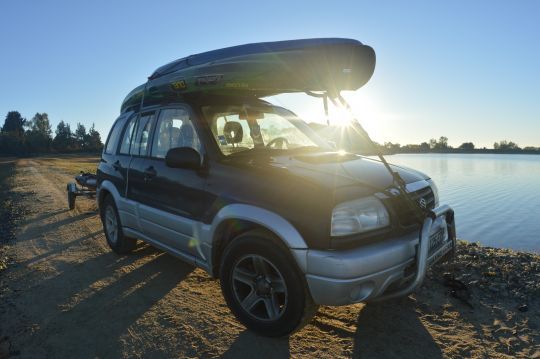
The trailer is practical for transporting more than two kayaks, or for some very heavy kayaks. To use this tool, you'll need the appropriate permit and a small additional investment.
In any case, always check the kayak's lashing and don't hesitate to check it regularly during your trips.

 /
/ 